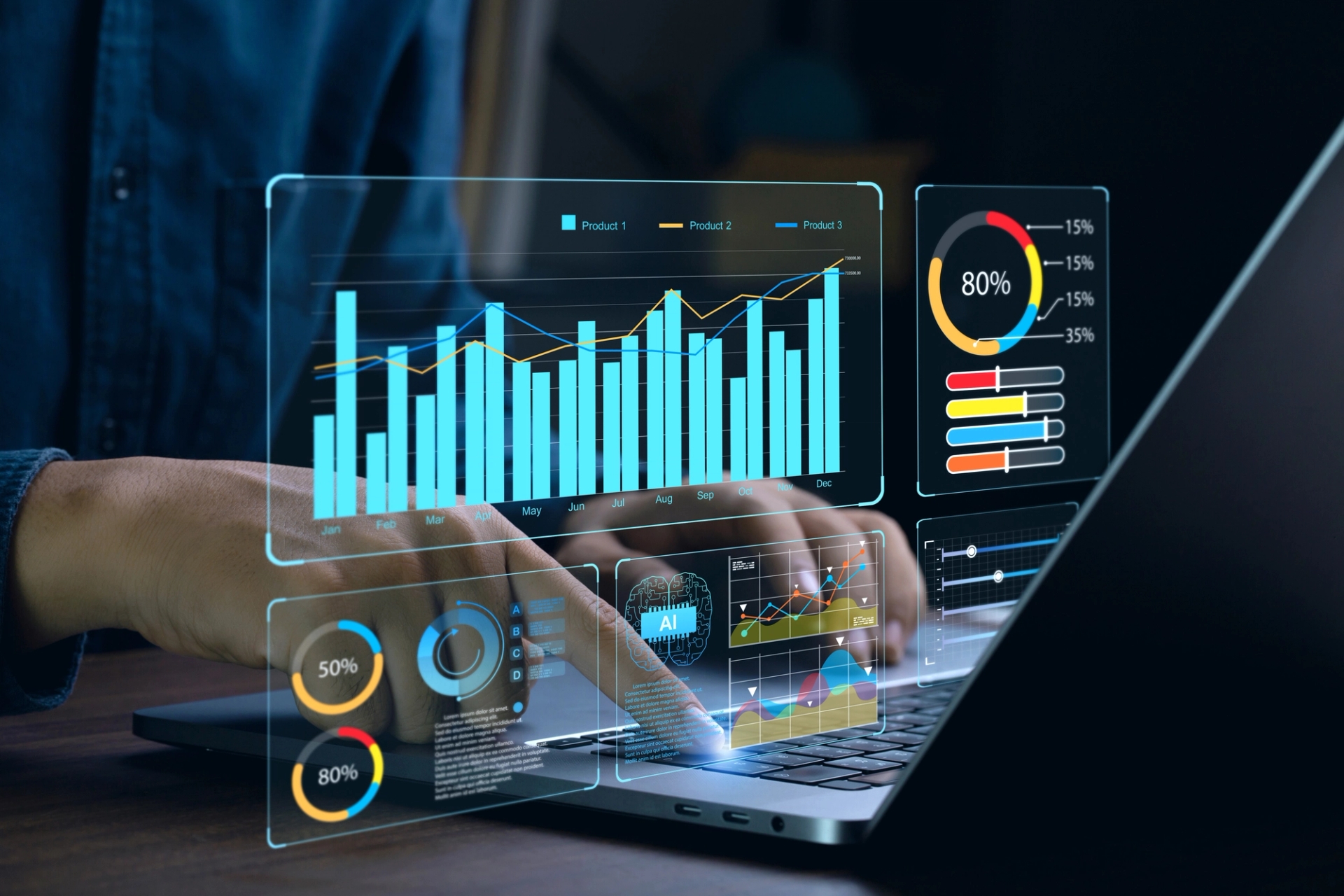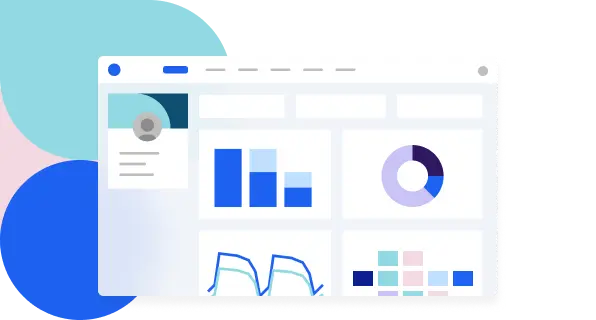10+ Event Engagement Metrics You Cannot Afford To Miss
Discover practical methods to assess event engagement and enhance your outcomes. Read on for actionable tips and strategies to boost your success.

Introduction: Why Measuring Engagement Matters
You put in months of event planning, lined up the perfect speakers, and delivered a seamless experience—but was your event truly a success?
Tracking event engagement goes beyond counting how many attendees showed up. It’s about understanding how your audience interacted, what resonated, and how you can improve future events—whether it’s a virtual event, hybrid experience, or in-person gathering.
Measuring engagement helps event organizers:
- Assess marketing efforts and audience interaction
- Identify critical metrics tied to ROI
- Track customer engagement metrics for long-term value
- Optimize future events and engagement strategies
- Align event data with business goals
Let’s break down the key engagement metrics that matter, how to interpret them, and what to do if they’re high—or worryingly low.
Common Engagement Terms Explained
When measuring event engagement, you'll encounter a variety of industry terms and metrics. Here’s what they mean—and why they matter:
Net Promoter Score (NPS)
This is a simple yet powerful way to measure customer loyalty. It asks attendees how likely they are to recommend your event to others, typically on a scale of 0 to 10. A high NPS indicates a strong emotional connection and can help predict repeat attendance or referrals for future events.
Customer Lifetime Value (CLTV)
CLTV represents the total revenue you can expect from an attendee or customer over the lifetime of your relationship. Understanding this metric helps you determine how much to invest in your engagement and retention strategies.
Customer Satisfaction Score (CSAT)
CSAT gauges how satisfied attendees were with their experience, usually gathered through post-event surveys. A higher score indicates a successful event and a better event experience. It’s often the most direct feedback about what worked—and what didn’t.
Bounce Rate
This refers to the percentage of users who visited your event site or mobile app but left quickly without engaging. A high bounce rate can signal unclear messaging, poor UX, or a lack of compelling content.
Live Polling Response Rate
This metric shows how many attendees engaged with interactive features like live polls during sessions. It reflects attentiveness and how actively your audience is participating in real time.
Engagement Features
These are built-in tools like Q&A modules, emoji reactions, live chat, downloadable resources, and in-session polls. The more attendees use them, the higher your audience interaction and event engagement.
Active Users
This term refers to attendees who performed at least one meaningful interaction—clicked on content, responded to a poll, posted on a feed, etc.—within your event app or platform. It’s a direct measure of how involved your audience is.
Event App Usage
Beyond just downloads, this includes the number of logins, time spent, clicks, and feature usage within your mobile event app. It tells you how effectively your digital touchpoints supported your event.
Post Event Engagement
Refers to all the activities and communication that happen after your event ends—emails, content sharing, surveys, community building, and more. Strong post-event engagement means your event continues to deliver value long after it’s over.
User Behavior
These are the patterns and actions that reveal how attendees interacted with your event content—such as which sessions they clicked on, how long they stayed, or which resources they downloaded. This data is essential for optimizing future events and enhancing the attendee journey.
Now, let's understand key metrics in detail along with the detailed information on each one of them.
Key Engagement Metrics You Must Track (and What They Tell You)
Not all engagement data is useful—choose the right metrics to track based on your event goals, whether it's lead generation, education, or networking.
To accurately measure event success, look beyond applause and attendance—focus on attendee behavior, satisfaction scores, and whether your event achieved its strategic objectives.
Let’s break it down:
1. Session Participation Rate
While high event attendance is encouraging, true engagement lies in how many of those attendees stayed active, participated, and took meaningful actions during the event
What it is: Percentage of registered event attendees who joined and stayed through live or recorded sessions.
Why it matters: This reveals how relevant your event sessions were to your target audience and reflects the strength of your event strategy.
How to track: Use your event platform or event management software to track attendance data for each session.
If low:
- Shorten sessions or add variety to improve average session duration.
- Promote high-interest sessions more effectively with speaker teasers or social media posts.
- Introduce live polling or Q&A to boost interaction.
If high:
- Reuse high-performing sessions in your post event marketing.
- Highlight these in follow up emails or promote in your next event teaser.
2. Live Polling & In-Session Interactions
What it is: Measures audience interaction through polls, emoji reactions, quizzes, or chat during sessions.
Why it matters: High interaction means people are engaged, not just passively watching—especially crucial in virtual events or hybrid events.
How to track: Through your event app, virtual platform, or event tech stack with interaction reports.
If low:
- Train speakers or moderators to encourage real-time participation.
- Use simpler, more engaging poll questions.
- Offer giveaways or gamify responses.
If high:
- Turn results into interesting content (e.g., “Top Trends from Our Audience”).
- Use the feedback to inform future session design.
3. Attendee Satisfaction Score (CSAT)
What it is: A post-event rating, usually on a 1–5 scale, that reflects overall event experience.
Why it matters: It reveals emotional response and customer satisfaction, directly impacting customer loyalty and event success.
How to track: Include satisfaction ratings in your post event surveys.
If low:
- Review qualitative feedback for specific issues.
- Address gaps in communication, logistics, or content.
If high:
- Feature quotes in testimonial videos or on your event website.
- Encourage respondents to share feedback on social media.
4. Net Promoter Score (NPS)
What it is: Measures how likely attendees are to recommend your event, typically on a scale of 0–10.
Why it matters: NPS is a strong indicator of customer retention, event ROI, and long-term loyalty.
How to track: Include the standard “How likely are you to recommend…” question in post-event follow-up.
If low:
- Analyze detractor comments to fix key pain points.
- Improve onboarding, session quality, or support touchpoints.
If high:
- Offer NPS promoters early bird discounts for your next event.
- Encourage them to become brand advocates via referral campaigns.
5. Event App Usage & Behavior
What it is: Tracks engagement within your event app—clicks, logins, time spent, and feature interaction.
Why it matters: Reveals how well your event technology supports the attendee journey and where users interact most.
How to track: Use in-app analytics dashboards to monitor user engagement metrics.
If low:
- Promote app use with in-app-only content or games.
- Simplify the UI and clearly explain features pre-event.
If high:
- Double down on high-usage features in future planning.
- Identify patterns to improve user behavior predictions.
6. Social Media Engagement
Social Media Engagement is a big part of any event marketing strategy and therefore, it is important to evaluate the data.
What it is: Measures likes, shares, comments, and mentions on social media channels before, during, and after your event.
Why it matters: Indicates how much buzz your event created and how well you engaged your target audience online.
How to track: Use social media analytics tools like Sprout Social, native platform insights, or hashtags.
If low:
- Improve your event hashtag strategy.
- Feature user-generated content to increase visibility.
- Launch contests with friendly competition.
If high:
- Repurpose posts for post-event content and ads.
- Build off the momentum with a mini content campaign.
7. Website & Session Page Traffic
What it is: Tracks visits to your event website, session detail pages, speaker bios, or CTAs.
Why it matters: Helps you understand customer behavior and what content sparked the most interest.
How to track: Use Google Analytics, your event software, or embedded tracking tools.
If low:
- Refine messaging in your marketing campaigns.
- Boost visibility of high-impact sessions or presentation slides.
If high:
- Prioritize those topics in future events.
- Use those pages as landing pages for customer acquisition.
8. On-Demand Content Views
What it is: Tracks how many attendees watched recorded event sessions or downloaded content after the event ends.
Why it matters: Shows ongoing value of your event and how your event strategy supports longer-term learning or lead nurturing.
How to track: Use analytics from your video hosting or CRM system.
If low:
- Send reminders via email with strong CTAs.
- Highlight benefits like “exclusive access” or key takeaways.
If high:
- Use those sessions in marketing efforts for your next event.
- Share data with your sales team to boost lead generation.
9. Average Session Duration
What it is: Measures how long attendees stayed in a session before dropping off.
Why it matters: A key event audience engagement metric. Long durations signal strong content; short durations may indicate weak delivery or technical issues.
How to track: Via your event platform’s session analytics.
If low:
- Add interaction every 5–7 minutes.
- Use shorter lightning talks or coach speakers on pacing.
If high:
- Highlight those sessions in your event posts.
- Repurpose them as lead magnets or exclusive content.
10. Conversion Metrics (Sign-ups, CTAs, Upsells)
What it is: Tracks conversions—new sign-ups, purchases, or other actions—related to customer engagement during the event.
Why it matters: Indicates real business impact, especially for marketing strategy, ticket sales, or customer spends.
How to track: Monitor your CRM and event tech stack for triggered actions during and after the event.
If low:
- Simplify your CTAs.
- Make promotions clearer and better timed.
If high:
- Analyze engaged users to improve customer journey mapping.
- Retarget them for future event planning or VIP programs.
Tools to Help You Track & Act on Engagement
Once you have implement best of your event engagement ideas, It is time to measure, optimize, and act on engagement data effectively, which can be made easy by using robust event management software like Azavista to:
- Centralize attendee and engagement metrics
- Track engagement across event sessions, apps, and emails
- Automate customer feedback collection
- Use AI to recommend actions based on user behavior
- Trigger follow-up marketing based on event audience engagement
How to Know If Your Event Was a Success
There’s no single metric that defines event success—but there are patterns that point to it. Knowing how to measure event engagement means looking beyond attendance numbers and understanding key performance indicators that align with your goals.
Here’s what a successful event usually looks like:
- High attendee engagement across multiple sessions, both live and on-demand
- A spike in website traffic, especially to key conversion pages or particular sessions
- Consistent event app usage, social sharing, and participation in polls or chats
- Strong post-event customer satisfaction and qualitative feedback
- Measurable progress in the customer journey—turning new leads into loyal customers or existing customers into brand advocates
- Actionable insights from your event metrics that help you optimize future events
Final Tip: Use both quantitative data (click-through rates, engagement heatmaps, app logins) and qualitative insights (open-text responses, sentiment in social media posts) to truly measure audience engagement. This combined approach helps you refine event engagement strategy for your next event.
Conclusion: Use the Right Metrics to Power Better Events
Learning how to measure event engagement isn’t about drowning in dashboards—it’s about making smarter decisions that improve your event's performance. Every interaction tells a story. Whether it’s an attendee dropping off mid-session or sharing a glowing post-event testimonial, it’s a clue that can improve how you create events that truly resonate.
When you track the right event metrics, you gain insight into:
- What content your audience values most
- Where your marketing strategy is strong (or weak)
- How user engagement metrics affect customer acquisition and retention
- Which channels convert best—be it social media, event app, or email
- The success factors that predict outcomes in future programs
More Event Marketing and Promotion












